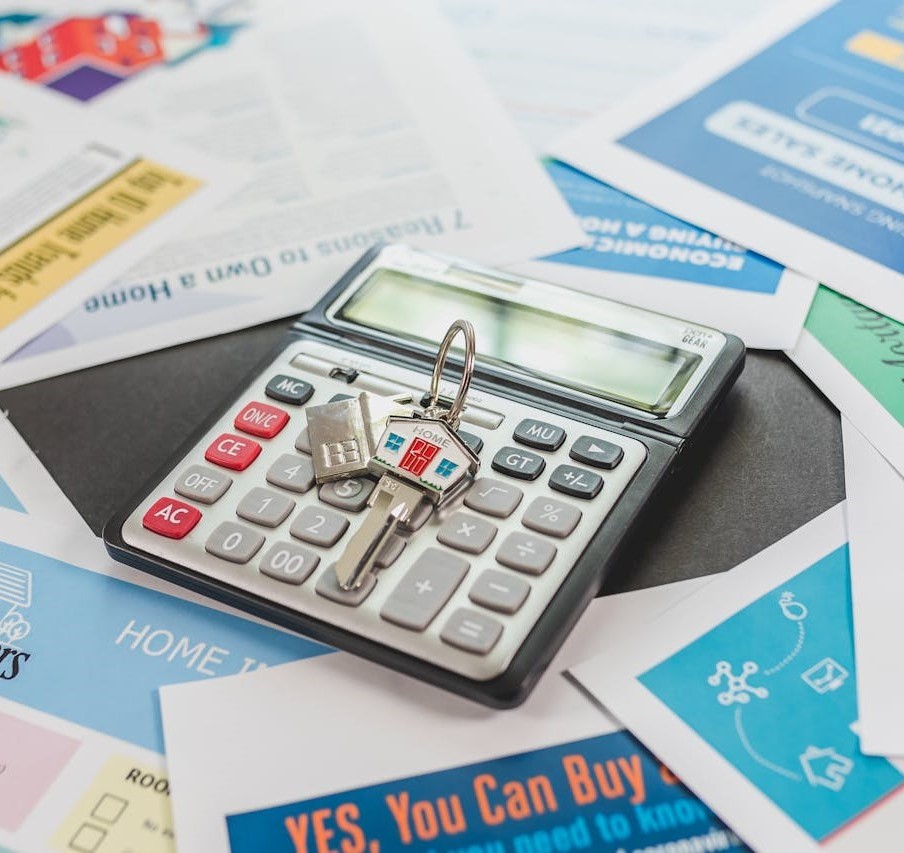Duis mollis, est non commodo luctus, nisi erat porttitor ligula, eget lacinia odio sem nec elit. Morbi leo risus, porta ac consectetur ac, vestibu lum at eros. Nulla vitae elit libero, a pharetra augue.
Top Tips for First-Time Homebuyers to Secure a Mortgage
Duis mollis, est non commodo luctus, nisi erat porttitor ligula, eget lacinia odio sem nec elit. Morbi leo risus, porta ac consectetur ac, vestibu lum at eros. Nulla vitae elit libero, a pharetra augue.
Fixed-Rate vs. Adjustable-Rate Mortgages: Which Is Right for You?
Duis mollis, est non commodo luctus, nisi erat porttitor ligula, eget lacinia odio sem nec elit. Morbi leo risus, porta ac consectetur ac, vestibu lum at eros. Nulla vitae elit libero, a pharetra augue.
Understanding Closing Costs: What Homebuyers Should Expect
This article would help buyers understand and prepare for closing costs, which are often an unexpected part of the buying process.
- Types of Closing Costs and Their Purposes: Break down common closing costs, including loan origination fees, title insurance, appraisal fees, credit report fees, and escrow deposits. Explain each cost briefly and its purpose in the home-buying process.
- Typical Closing Costs Range: Detail how closing costs typically range from 2% to 5% of the home’s purchase price and provide an example calculation to give readers a better idea of the amount they’ll need.
- Tips to Reduce Closing Costs: Offer practical advice for minimizing these costs, such as comparing quotes from different lenders and asking about lender credits. Suggest negotiating certain fees and exploring first-time homebuyer programs that might offer assistance with closing costs.
- Rolling Closing Costs Into the Loan: Explain that, in some cases, buyers can roll their closing costs into the loan amount, reducing upfront costs. Discuss the potential trade-off in terms of a slightly higher monthly payment and long-term interest.
- What to Expect on Closing Day: Guide readers on what happens on the day of closing, including final walkthroughs, reviewing and signing closing documents, and getting the keys to their new home.
Refinancing Your Home Loan: When and Why to Consider It
This article would delve into refinancing options, including the benefits, costs, and scenarios in which it might make sense to refinance.
- What is Refinancing, and How Does It Work?: Explain that refinancing involves replacing an existing mortgage with a new one, often with better terms. Describe how homeowners can refinance to lower their interest rate, shorten the loan term, or access equity.
- Benefits of Refinancing: Discuss common reasons for refinancing, such as lowering monthly payments by securing a lower interest rate, switching from an adjustable-rate mortgage to a fixed-rate one, or accessing cash through a cash-out refinance.
- When Refinancing Might Make Sense: Offer examples of situations where refinancing is beneficial, such as when interest rates drop significantly or the homeowner’s credit score has improved. Include scenarios where homeowners need to consolidate debt or fund large expenses with cash-out refinancing.
- Cost of Refinancing and Potential Savings: Explain that refinancing involves closing costs, usually between 2% and 5% of the loan amount. Offer a formula or tool to help readers calculate their break-even point (the time needed for monthly savings to cover refinancing costs).
- Cash-Out Refinancing: Describe how cash-out refinancing allows homeowners to borrow against their home equity, converting part of
How to Boost Your Credit Score Before Applying for a Mortgage
Duis mollis, est non commodo luctus, nisi erat porttitor ligula, eget lacinia odio sem nec elit. Morbi leo risus, porta ac consectetur ac, vestibu lum at eros. Nulla vitae elit libero, a pharetra augue.





